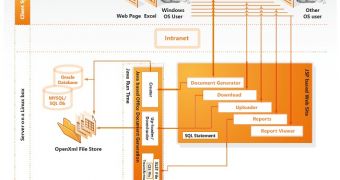The OpenXML document format creates a bridge over the gap between Windows and Linux by opening new opportunities for Linux programmers to create documents in a Windows-friendly format, and more. Novell's Open Office edition supports OpenXML and even Corel have started supporting this format, changing the things that happened in the past when different office suites would create their own formats, without offering 100% compatibility between their own and the rival ones.
OpenXML has an advantage over a binary file format, because it offers the possibility to change a document without damaging it. New utilities can operate over Microsoft Office files, with no risks, tools that could be a sort of command-line global search-and-replace, searching through a big number of files. The ability to modify batches of documents, in a very short and rapid way, is the biggest advantage of OpenXML over binary file types.
Developers have started producing Excel documents in PHP, or Word ones in Java, and converting ODF files in OpenXML and viceversa, showing the great range of possibilities OpenXML gives to a developer. Also, some utilities that use OpenXML can be run on servers, invoked by the server-side apps.
This technology can be used in much bigger projects, like a commercial bank website, where users can get their balance as a spreadsheet that can be downloaded to their computers, containing the information they needed about their account. This can be used to simulate some operations like loans, the profit during a financial year etc.
OpenXML doesn't impose any constraints on the server or desktop technology used by someone, giving interoperability between different operating systems and bringing a much richer experience to the user.
A book covering the OpenXML format, called "OpenXML Explained", has been released, and can be downloaded as PDF or purchased by anyone interested in OpenXML.

 14 DAY TRIAL //
14 DAY TRIAL //